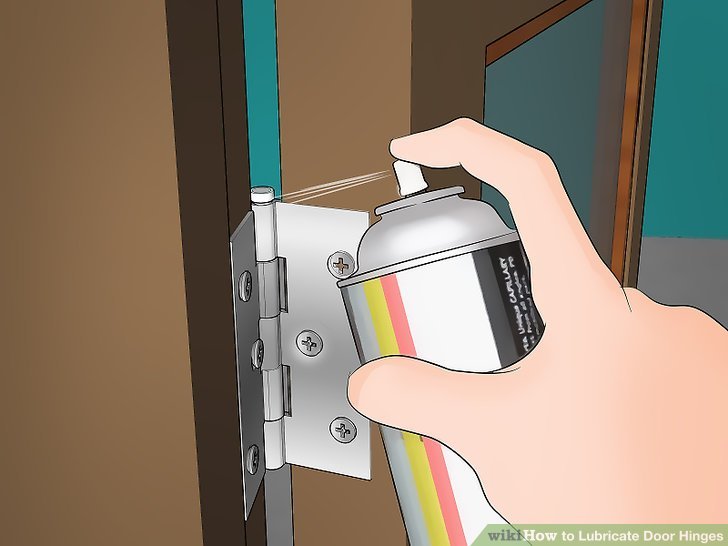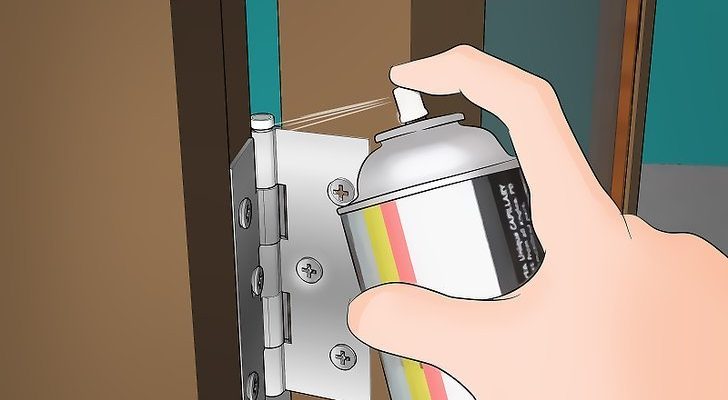
Door hinges go through a lot of action—from your front door to the bathroom door and everything in between. Over time, they can get dry and noisy, which can be annoying for you and anyone nearby. Keeping that in mind, choosing the right lubricant type can enhance your door’s longevity, ease of use, and overall comfort. Let’s explore the options and how to get the most out of them.
Why Lubricate Your Door Hinges?
You might be wondering why you should even bother with lubricating door hinges. The truth is, door hinges are critical parts that help doors swing smoothly. Without proper lubrication, they can wear out faster, leading to unnecessary replacements and repairs.
Regularly applying lubricant helps prevent rust and corrosion, which are common issues for metal hinges, especially in humid environments. If the hinges aren’t working smoothly, it can lead to misalignment, which may cause the door not to close properly or even become stuck. All these problems can turn a simple task—like grabbing a snack from the kitchen—into a mini wrestling match with your door!
Here’s the thing—keeping your door hinges lubricated means you won’t have to hear irritating creaks or squeaks each time you pass through. It’s a small task that makes a big difference, transforming your home’s atmosphere into a more peaceful and comfortable environment.
Types of Lubricants: Spray vs. Gel
When it comes to lubricating your door hinges, you’ll generally find two main types of lubricant: spray and gel. Each has its unique advantages and considerations.
Spray lubricant is quick and easy to apply. It comes in a can with a nozzle that allows you to precisely target areas. This type is great for getting into tight spots and covering large areas, but it can be messier. If you’re in a rush, spray lubricants can save you time but may require more careful application to avoid overspray.
On the other hand, gel lubricant offers a thick consistency that clings to the hinge. This means it stays put longer, providing sustained lubrication. Gel can be especially handy if you’re dealing with heavier doors, as it reduces the chance of drips or runs. However, applying gel can be a bit trickier because it needs to be spread evenly to ensure coverage.
Ultimately, the choice between spray and gel depends on your specific needs, the type of hinge you’re dealing with, and your comfort level with each application.
How to Apply Spray Lubricant to Door Hinges
Using spray lubricant might seem straightforward, but a few steps will ensure you get the best results. Here’s a simple guide:
1. Gather your materials. You’ll need spray lubricant, a clean cloth, and possibly a small brush for hard-to-reach areas.
2. Clean the hinge area. Before applying lubricant, wipe down the hinge with a cloth to remove any dust or grime. This ensures the lubricant can penetrate effectively.
3. Apply lubricant. Hold the spray can upright and direct the nozzle toward the hinge. Spray a light coat, making sure to cover all moving parts.
4. Let it sit. Allow a few minutes for the lubricant to soak in. This helps it work its magic on the hinge.
5. Wipe away excess. Use your cloth to clean off any excess lubricant that drips down. You don’t want any sticky residue left behind.
By following these steps, you’ll keep your doors operating smoothly with minimal fuss.
How to Apply Gel Lubricant to Door Hinges
If you’ve chosen gel lubricant, the application process differs slightly but is equally easy. Here’s how to do it right:
1. Prepare the area. As with spray lubricant, start by cleaning the hinge area to remove dirt and debris.
2. Apply the gel. Using your fingers or a small brush, take a small amount of gel and apply it directly to the hinge. Focus on the pin and the pivot points.
3. Work it in. Gently open and close the door to help distribute the gel throughout the hinge. This ensures it reaches all necessary points.
4. Remove any excess. Just like with spray, wipe away any excess gel that may have settled on the surface.
Using gel can take a bit more effort, but the payoff is worth it, especially for heavier doors.
Common Mistakes to Avoid When Lubricating Hinges
Even simple tasks can get tricky! Here are some pitfalls to avoid when lubricating door hinges:
1. Over-application. It’s easy to think that more is better, but applying too much lubricant can lead to build-up and mess. Go for a light coat and add more if needed.
2. Ignoring the cleaning step. Skipping the cleaning process can prevent the lubricant from working effectively. Always wipe down the hinges before applying anything.
3. Using the wrong product. Not all lubricants are equal. Avoid using oils that aren’t meant for hinges, like cooking oil, as they can attract dirt and lead to more problems over time.
4. Neglecting regular maintenance. Just because you lubricated the hinges doesn’t mean they’re set for life. Plan to check and reapply every few months or whenever you notice squeaks.
By avoiding these mistakes, you’ll set yourself up for success—and smooth openings.
When to Lubricate Door Hinges
Knowing when to lubricate your door hinges is just as important as knowing how. Here are some signs that it’s time to get to work:
– Squeaking or creaking noises. If you hear that annoying sound when opening your door, it’s a clear signal that the hinges need some attention.
– Resistance when opening or closing. If your door feels sticky or hard to open, it’s probably time to give those hinges a little love.
– Visible rust or grime. If you notice rust spots or dirt accumulating on the hinge, it’s a good idea to clean and lubricate it.
Regular maintenance is crucial. If you live in an area with high humidity or heavy use, consider checking your hinges every couple of months. For lighter use, a couple of times a year should do the trick.
Final Thoughts on Door Hinge Lubrication
Taking care of your door hinges is a simple yet significant part of home maintenance. Whether you choose spray or gel lubricant, applying it correctly can improve functionality and extend the life of your hinges. Regular upkeep keeps your doors quiet and smooth, ensuring they open and close effortlessly.
If you’re new to the world of lubricants, don’t worry! With a little practice, you’ll be a pro in no time. And who knows? You might even start enjoying the small satisfaction of a well-oiled door. So grab your lubricant of choice and give those hinges the care they deserve!
